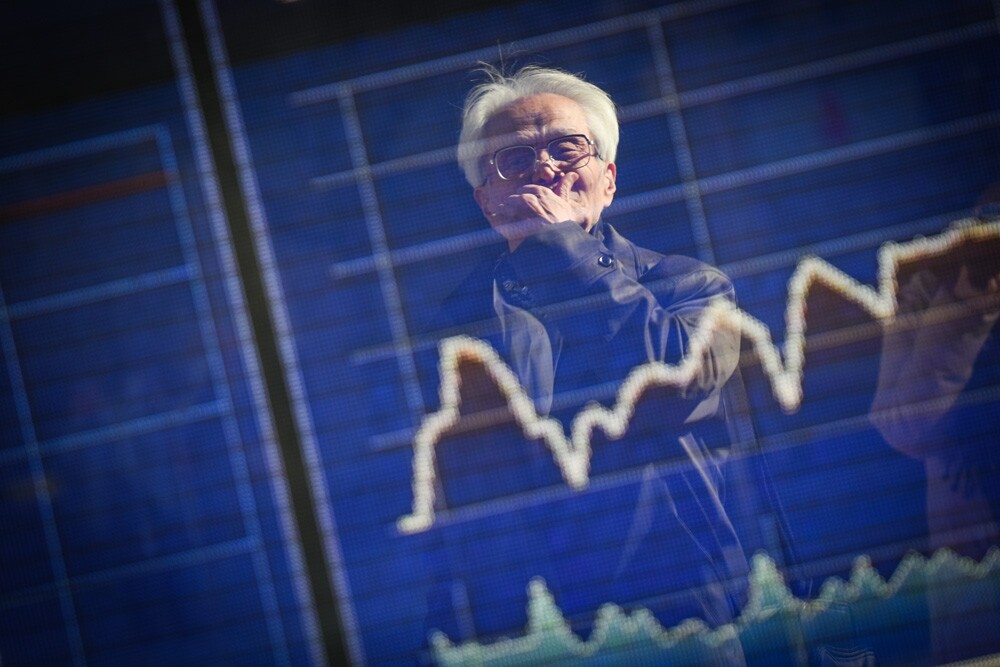Institutional investors are feeling confident in the face of a trade war that could tear a hole in their portfolios.
Eighty-seven percent of the 75 institutional investors surveyed by Wilshire Associates say they are more or “far more” prepared for a bear market than in 2007, according to a statement Monday from the consulting firm. About 95 percent of investors are at least “somewhat confident” in their readiness to steer through market volatility, while 39 percent feel “very confident,” Wilshire said.
Geopolitical events are the most likely trigger for a sustained downturn, investors said in the survey, with about 40 percent pointing to the trade dispute between U.S. and China as the “potential epicenter” of the next correction. As they position their portfolios for market tumult, Wilshire found the largest portion of investors probed about asset performance expect equities to produce the best gains over the next year.
“Since investor perceptions of preparedness for market turbulence can often differ from actual readiness, running portfolio stress tests can be a valuable technique to pre-experience an institution’s preparedness,” Steve Foresti, chief investment officer of Wilshire’s consulting unit, said in the statement. “While it is nearly impossible to predict what might trigger a sustained market correction, institutions can make sure their portfolios are well diversified to account for various risks and market scenarios.”
A breakdown in trade negotiations that leads the U.S. to impose tariffs on the rest of the goods it imports from China would cause stocks to plunge, according to a May 17 report from the chief investment office of UBS Group’s wealth management unit.
U.S real gross domestic product growth could shrink by about 0.75 to 1 percentage point under this “downside scenario,” UBS said in the report. “As a result, S&P 500 profits could be hit by 3 percent or more, causing the index to fall by 10 – 15 percent” over a six-month period.
Under the same downside case, to which UBS assigns a 30 percent probability, Chinese equities could fall by 15 percent to 20 percent as the country’s GDP loses about 1 percentage point of growth, according to the report.
“In our risk case, the U.S. administration imposes tariffs on the remaining Chinese imports after the conclusion of the hearing process around July or August,” UBS said. “Negotiations would likely take a lengthy pause and resume only when the growth outlook for both countries worsens considerably.”
[II Deep Dive: As the World Fractures, Asset Allocators Are Doing... Nothing. Are They Insane?]
The bank’s base case, viewed as having a 50 percent probability of occurring, has a more positive outcome for investment portfolios. It assumes a trade deal or truce over the next six months after a “bumpy negotiation process” that potentially causes spikes in market volatility, UBS said. In this scenario, U.S. stocks could climb as much as 7 percent over a six-month horizon, while Chinese equities could rise as much as 10 percent.
“Our baseline scenario pictures Presidents Trump and Xi meeting at the June G20 summit and agreeing to continue to negotiate,” UBS said in the report. “Beijing probably needs to give up its bid for the US to remove all tariffs at once and accept a partial unwinding of the levies, with further rollbacks subject to a review mechanism.”
According to Wilshire’s survey, about 41 percent of institutional investors expect U.S. or emerging market equity to produce the biggest returns over the next year. Fixed income was the next-most highly cited investment opportunity, with 29 percent of investors predicting international and U.S. fixed-income assets will post the greatest gains.
About 20 percent of investors think alternative assets will have the best returns over the next year, Wilshire found, while 10 percent pointed to real estate.
“Institutions are a mixed bag when it comes to what type of investments will generate best market returns in the next 12 months,” Wilshire said.







